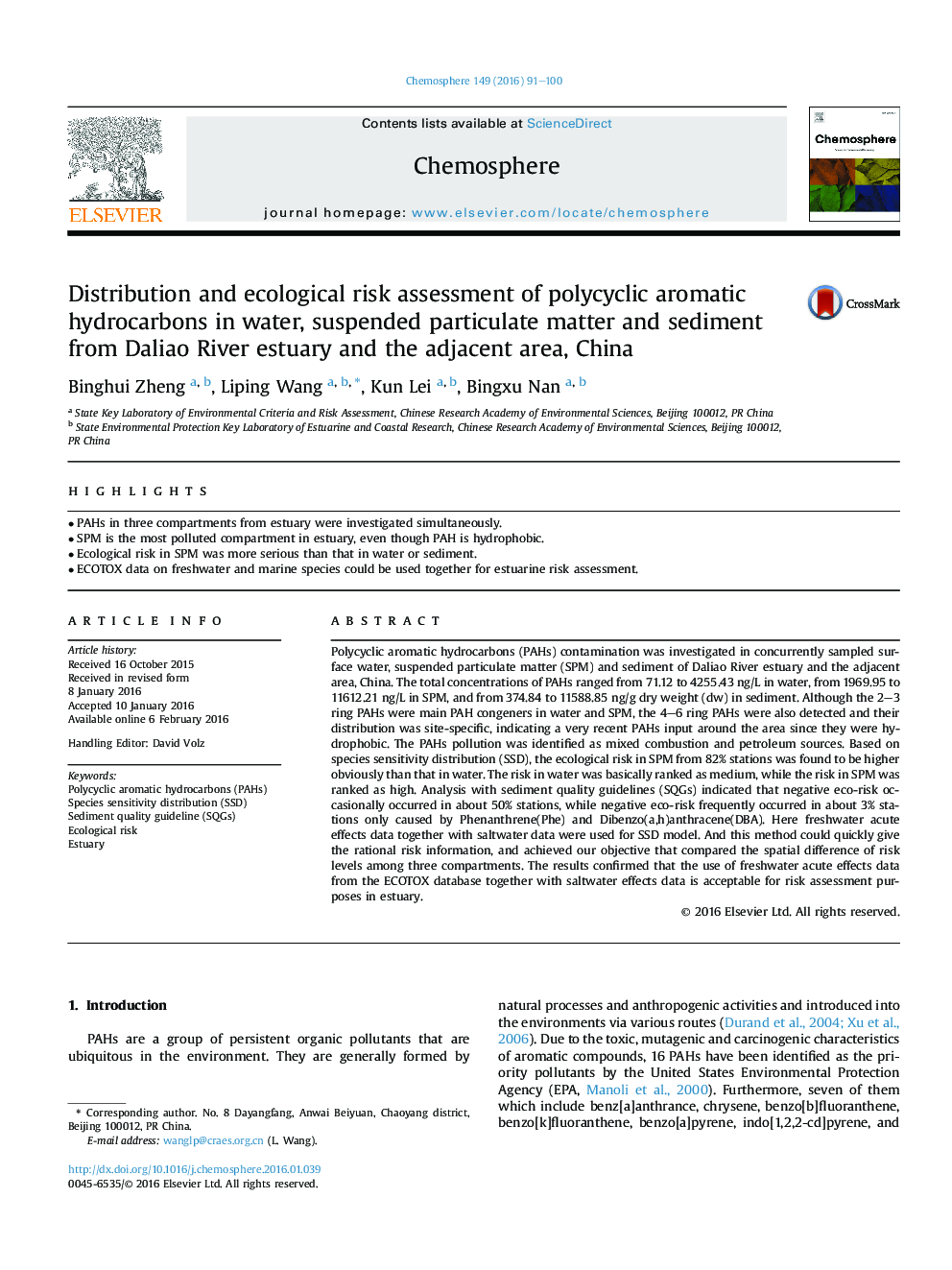| کد مقاله | کد نشریه | سال انتشار | مقاله انگلیسی | نسخه تمام متن |
|---|---|---|---|---|
| 4407903 | 1618822 | 2016 | 10 صفحه PDF | دانلود رایگان |
• PAHs in three compartments from estuary were investigated simultaneously.
• SPM is the most polluted compartment in estuary, even though PAH is hydrophobic.
• Ecological risk in SPM was more serious than that in water or sediment.
• ECOTOX data on freshwater and marine species could be used together for estuarine risk assessment.
Polycyclic aromatic hydrocarbons (PAHs) contamination was investigated in concurrently sampled surface water, suspended particulate matter (SPM) and sediment of Daliao River estuary and the adjacent area, China. The total concentrations of PAHs ranged from 71.12 to 4255.43 ng/L in water, from 1969.95 to 11612.21 ng/L in SPM, and from 374.84 to 11588.85 ng/g dry weight (dw) in sediment. Although the 2–3 ring PAHs were main PAH congeners in water and SPM, the 4–6 ring PAHs were also detected and their distribution was site-specific, indicating a very recent PAHs input around the area since they were hydrophobic. The PAHs pollution was identified as mixed combustion and petroleum sources. Based on species sensitivity distribution (SSD), the ecological risk in SPM from 82% stations was found to be higher obviously than that in water. The risk in water was basically ranked as medium, while the risk in SPM was ranked as high. Analysis with sediment quality guidelines (SQGs) indicated that negative eco-risk occasionally occurred in about 50% stations, while negative eco-risk frequently occurred in about 3% stations only caused by Phenanthrene(Phe) and Dibenzo(a,h)anthracene(DBA). Here freshwater acute effects data together with saltwater data were used for SSD model. And this method could quickly give the rational risk information, and achieved our objective that compared the spatial difference of risk levels among three compartments. The results confirmed that the use of freshwater acute effects data from the ECOTOX database together with saltwater effects data is acceptable for risk assessment purposes in estuary.
Journal: Chemosphere - Volume 149, April 2016, Pages 91–100
